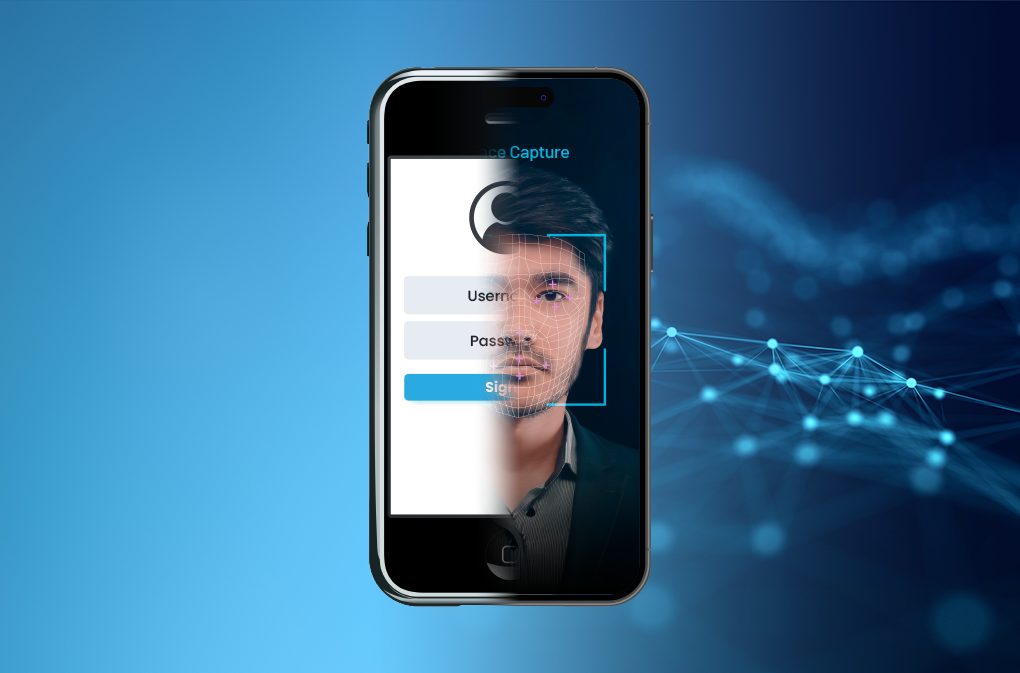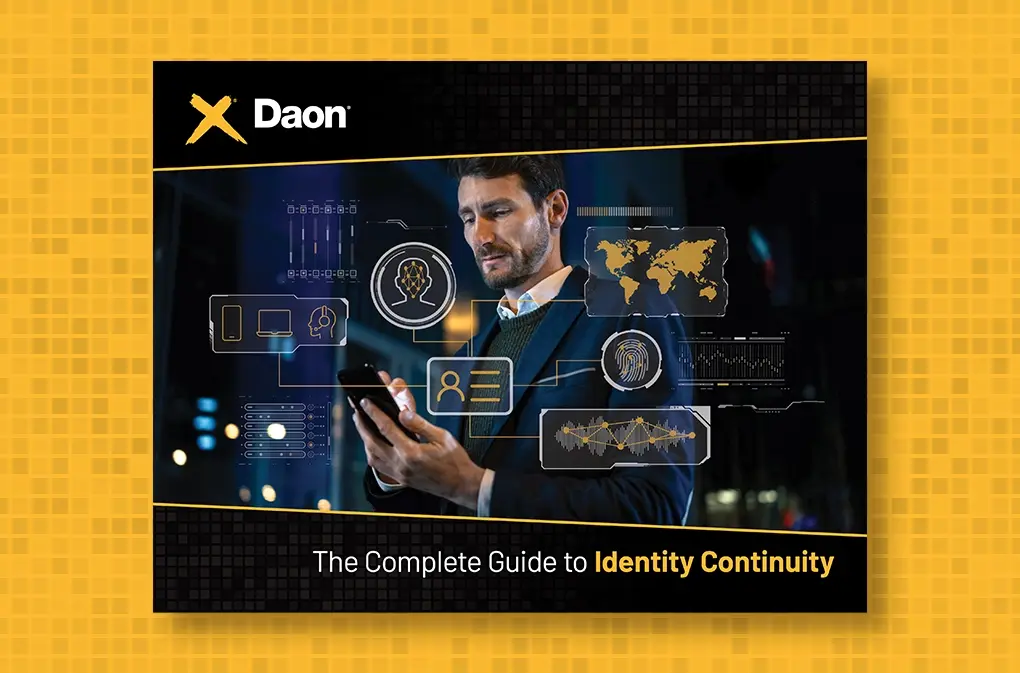Unifying Customer ID
Banking customers "just want to feel known." Here's how you can reach them.
In recent years, we’ve seen how relationships between businesses and their customers can stretch to the brink due to pandemic lockdowns, supply chain issues, and endless other disruptions that inevitably take a toll on our daily lives. These challenges have shown us that business priorities can change in the blink of an eye, exposing significant shortfalls in security and customer service capabilities that, until 2020, had not gained the visibility they have today.
In response, customer service expectations rose dramatically, leaving organizations struggling to keep up with customer demands. These developments have everything to do with our nature as human beings – we crave authentic connections with those who value us as individuals, even in the context of a business relationship. So, when the COVID-19 outbreak upended life as we knew it, consumers looked to brands and organizations for reassurance that they would continue to be valued amid the chaos.
This couldn’t be truer for the financial services sector, which is also under assault from ever-increasing levels of cybercrime and identity fraud, not to mention economic swings brought on by the pandemic. CIAM, or Customer Identity and Access Management, is redefining the meaning of trust in customer-business relationships and paving the way for enhanced security capabilities.
This article explores the changing customer service expectations held by consumers and how the COVID-19 pandemic accelerated demands for integrated and comprehensive customer service experiences – both online and in-person. It also explains why CIAM systems have reached high levels of demand that only continue to rise.
The Intersection of Customer Identity, Security, and Trust in the Financial Sector
Identity is the most personal asset that an individual possesses. Without the fundamental ability to assert who we are, our rights and freedoms can disappear. Centuries ago, before the use of currency, identity verification was not so critical because bartering systems depended on repeated in-person interactions to form the basis of trust.
The arrival of currency changed all that, paving the way for establishing intermediary elements and banking systems to manage and protect stored units of value. It was here that trust, security, and customer identity first intersected in the economic sphere.
No matter how much our society grows and develops, trust, security, and customer identity will always be especially sacred for businesses and financial organizations. FICO explains that the mandate to manage customer identity and access management across the business sector is critical to financial organizations since “getting it wrong can lead to identity fraud losses, anti-money laundering enablement, and poor customer experience.”
But especially in the face of advanced technologies and ongoing global crises, managing the delicate balance between these three elements will continue to place an onerous burden on financial organizations.
Changing Customer Service Expectations
The pandemic accelerated technological adoption substantially. The shift from offline to online interactions has been dramatic: in 2019, roughly 60% of interactions occurred offline, dropping to 40% offline in 2020 and 2021.
The mobile channel represents an increasingly important component for online purchases. In 2020 alone, mobile represented more than $500 billion in U.S. spending. That year, identity fraudsters employing increasingly sophisticated cybercriminal tactics siphoned away almost $2 billion from Americans. The following year, they succeeded in stealing almost $6 billion.
A recent U.S. Customer Expectation report revealed that 81% of shoppers are disappointed with the customer service they’ve received from brands, in-person and online, citing the overall reason that they “just want to feel known.” The further we progress into the digital age, the smaller each consumer feels against the backdrop of an increasingly globalized world. When we hit bumps in the road, like the recent pandemic, customer service becomes more important than ever.
Trust, as demonstrated through superb customer service experiences, is at the core of an organization’s competitive edge, as 45% of consumers reported discontinuing purchasing from a brand after two negative customer service experiences.
Warren Buffet captured the sentiment roughly 30 years ago: “After some other mistakes, I learned to go into business only with people whom I like, trust, and admire.” As the pandemic swept across the globe, one of the first and most dramatic changes in business interactions was improvements to customer experiences; prior, consumers felt like a number without a genuine personal connection.
After years of uncertainty, the effects are apparent among buyers. Almost 80% of American customers report that the experience an organization provides is just as necessary as the organization’s product and service offerings. A whopping 82% of those consumers are willing to spend more on brands that deliver excellent online customer service. There is a high ROI to be had for organizations that place customer service first, and it’s clear that these drivers have caused the CIAM market to grow astronomically in recent years.
Since banking organizations exist and operate based on trust, these developments continue to push those relationships to their limits. Rising expectations don’t necessarily imply a net increase in effort from financial enterprises. Consumers are especially interested in enhanced self-service options, allowing them to solve problems independently without seeking a service representative.
With more integrated systems that can anticipate problems and help prompt users with the resources they need to find self-service solutions, less time will be required of the customer service representatives, and consumers will have more satisfying experiences.
Unifying Identities
Financial organizations must contend with three major realities:
- Quick and seamless identity verification is critical for customer experience. Customers want to feel seen and valued by brands.
- Although identity fraud is as old as the institution of banking, circumstances have left financial organizations and their customers vulnerable to identity theft like never before. Historically, criminals did not have the capabilities to carry out identity theft and fraud at scale, but as technology has advanced, that reality has changed.
- Technology has often lagged behind cybercrime, leaving financial organizations and their customers frustrated and vulnerable. Firms are often seeking customer identity and trust-building technology that is easy to use and secure.
The ultimate goal for financial organizations remains the same: a delicate balance between trust, security, and quality customer service. By adopting more integrated customer identity and access management technologies, financial organizations stand to benefit in the following ways:
Identity Proofing
Seamless onboarding and identity verification offer a heightened level of security and UX. This is especially important in industries that prioritize security without wanting to frustrate customers who expect fast and easy authentication. Although customer expectations vary by generation, they are relatively consistent regarding customer satisfaction expectations. Research shows that most consumers across age groups are willing to prioritize convenience over brand, with 76% of Generation Z consumers ranking convenience over brand. No matter how great your products and services are, if consumers can’t access them easily, they will likely leave for a more convenient competitor.
Biometric Authentication
Biometric authentication is critical for modern ease and enhanced security. Between 2019 and 2020, the number of consumers feeling like they had lost control over their personal information jumped from 46% to 61%. High-profile data security breaches at well-known brands like Microsoft, American Airlines, Cisco, and Marriott didn’t dissuade those fears. While fraudsters can more easily hack password-protected access and take advantage of poorly secured biometric access protocols, more sophisticated biometric authentication has proven especially effective against fraud, especially with the creation of FIDO. As the nuances of digital financial interactions grow, cybercrime and identity theft threats will grow with them. The data that power this degree of customer satisfaction also make consumers skeptical of brands.
Identity Continuity
By connecting single points of verification into a seamless, single, holistic view of the customer across channels, identity verification, authentication, and recovery management gives customers a frictionless experience as they move into, between, and out of different interactions. Identity Continuity is a safer, more user-friendly solution to many of today’s digital identity journey issues. The room for improvement in customer service online becomes especially clear when consumers explain what sets the best customer service apart. While only 19% of consumers believe today’s customer service exceeds their expectations, those that do feel wowed by brands believe that what makes the experience exceptional is: “Having one seamless conversation across channels (46%), following up on issues to ensure satisfaction (33%), and proactively recommending products to consumers (28%).”
Benefits of CIAM for Financial Organizations
Born from these rising demands for consumer identity unification comes the term “customer identity and access management,” broadly referred to as CIAM. This identity solution enables organizations to verify and secure customer identities while tailoring marketing strategies at the individual consumer level. Since the types of information used to inform these technologies can include sensitive user data, security is the backbone of an effective CIAM strategy.
Robust CIAM strategies enable organizations to unify customer identities that are fragmented across multiple channels, bringing together a more comprehensive image of the customer that is more than simply the sum of their parts. Through CIAM, organizations can set themselves apart through user experiences that deliver a powerful advantage over the competition. CIAM can also help stop cybercriminals in their tracks, even when these bad actors attempt to use sophisticated synthetic identities.
Over recent years, the CIAM market has grown exponentially. By the end of 2022, experts predict it will have a CAGR of more than 20%, growing from $23 billion in 2021 to $27.79 billion. By 2026, that market is expected to reach just over $52 billion, growing at a CAGR of roughly 18%.
It isn’t just that the market that has grown; the ability of marketing departments to use CIAM to gain insights into customers is more essential now than ever before. Your CIAM solution can integrate with CRM tools (like Salesforce), building more information and a personal profile.
CIAM is in demand because of its unique ability to boost user experience and security simultaneously, made possible by an enhanced understanding of customer intentions and integrated, real-time consumer behavior analysis across channels. CIAM strategies also involve using sophisticated systems that can track and manage the unique signatures of individual electronic devices, adding ever-improved levels of confidence.
The 5 Core Competencies of CIAM Services
Consumers interact with financial organizations through several channels, including online, mobile devices, in-person, and so on. And depending on the financial organization, the preferred interaction methods will differ, deferring to the unique aspects of any given customer relationship. Each channel possesses a unique element of that relationship, and organizations need the ability to integrate and learn from those interactions holistically to fully leverage customer data.
CIAM solutions solve these common challenges by offering five primary competencies to financial organizations:
- Business process integration. Historically, businesses have not had access to the computing power they possess today. By leveraging the power of data, organizations open the door to endless possibilities, from spotting the earliest signs of fraudulent activity, to marketing, to interacting with their customer base on a more personalized level. The highest caliber strategies involve centralized CIAM and Business Intelligence (BI), where all data is integrated to achieve optimal utility.
- Enrollment. Top-tier systems allow for decentralized digital identity enrollment, protecting sensitive security and biometric information. Consumers appreciate decentralization for its ease of use and control. By utilizing digital wallets, financial organizations can put account control in the hands of their customers without sacrificing quality or security. They protect and enhance the relationship with their customers while easily providing internal management and access of their own data. Your CIAM solution can improve your acquisition and retention numbers with enrollment and registration that is simple, safe, and secure.
- Authentication. The best CIAM strategies utilize authentication factors that minimize or eliminate the use of passwords. Financial organizations can promote a CIAM strategy that leverages user-nameless SSO authentication with something as simple as QR codes. Regardless of your platform, your CIAM should be calibrated for an easy-to-use authentication journey for your customers.
- Authorization. Customers should be aware of your financial firm’s authorization protocol without it muddling an experience. The best authorization capabilities range from application-based to continuous authorization channels. These higher-quality channels ensure that each user session is monitored with a risk score and user experience is updated across channels. Authorization monitoring ensures both customer satisfaction and security.
- User self-service. The best CIAM strategies have robust self-service capabilities that go far beyond simple password reset functions. Organizations can implement the ability to track app-specific activity from a consumer’s device and across devices. How does this enhance UX without turning into Big Brother? With a secure solution, your system ensures immediate log-out on all devices if a specific application is compromised. Using self-service functions, users have the capability to access their own histories and adding, changing, or adjusting how they choose to interact with your platform. User self-service within CIAM systems focuses on managing all privacy-related inquiries through a more accurate method than self-service requests alone.
CIAM is the way that a financial organization shows its customers that it values both them and the way that it interacts with them. A PWC report discovered that consumers are more willing (63%) to provide their personal data to a company that supplies an experience that makes them feel good. Financial firms want to prove that they can provide 21st-century UX while maintaining high levels of security. Utilizing CIAM solutions that provide more choices for consumers is only the start.
A marriage of UX with security ensures that your customers are comfortable, regardless of what channel they choose, and that they are happy to maintain brand loyalty even when the next piece of technology is introduced.
IdentityX® is trusted by hundreds of millions of users across six continents to provide CIAM solutions that are built to last. Learn more when you schedule a free demo.
References:
Fernandez, Alfonso. “The Evolution of the Trust Factor. From Barter to Blockchain.” Altcoin Magazine. https://medium.com/the-capital/the-evolution-of-the-trust-factor-from-barter-to-blockchain-553f43d2306e.
Heiligenstein, Michael. “Recent Data Breaches – November 2022.” Firewall Times. https://firewalltimes.com/recent-data-breaches/.
Spajic, Damjan Jugovic. “Mobile Banking Statistics that Show Wallets are a Thing of the Past.” DataProt. https://dataprot.net/statistics/mobile-banking-statistics/.
“Consumer Identity Access Management Global Market Report 2022.” Report Linker. https://www.reportlinker.com/p06246518/Consumer-Identity-and-Access-Management-Global-Market-Report.html?utm_source=GNW.
“2021 Customer Expectations Report: What Customers Expect from a Modern Online Shopping Experience.” Gladly. https://gladly1.wpengine.com/wp-content/themes/gladly/content/2021%20Customer%20Expectation%20Report.pdf.
“State of the Connected Customer.” Salesforce. https://c1.sfdcstatic.com/content/dam/web/en_us/www/documents/research/salesforce-state-of-the-connected-customer-4th-ed.pdf.
“Customer Identity and Access Management.” FICO. https://www.fico.com/en/glossary/customer-identity-and-access-management.
“Consumer Sentinel Network Data Book 2020.” Federal Trade Commission. https://www.ftc.gov/reports/consumer-sentinel-network-data-book-2020.
“Consumer Sentinel Network Data Book 2019.” Federal Trade Commission. https://www.ftc.gov/reports/consumer-sentinel-network-data-book-2019.
“Experience is everything: Here’s how to get it right.” PWC. https://www.pwc.com/us/en/advisory-services/publications/consumer-intelligence-series/pwc-consumer-intelligence-series-customer-experience.pdf









